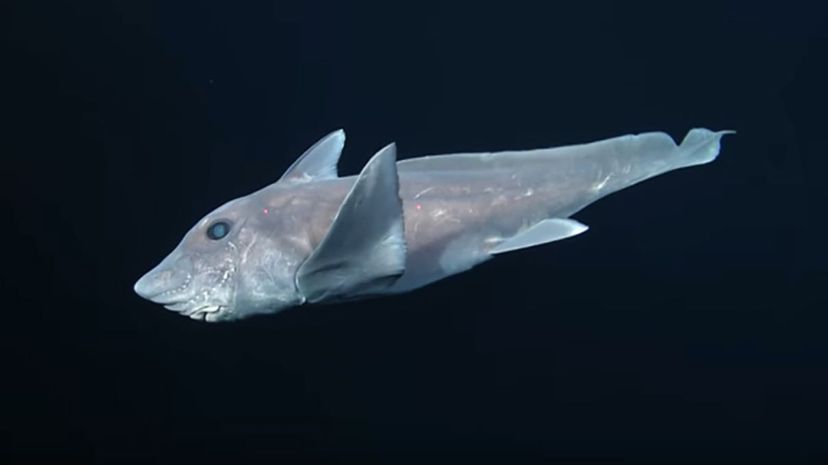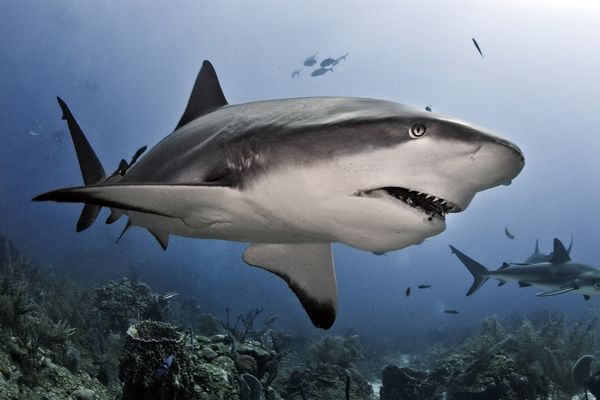
Here's a scientific fact: our ignorance about the oceans on our planet is profound, astonishing, and almost complete. We know more about the surface of the moon than we do about the sea floor. Of course, there are immense challenges to poking around in such deep, dark, pressurized environments, but we should disabuse ourselves of the notion that since we've managed to take pretty high-resolution photos of Pluto, that means we've got the ocean figured out. We don't.
Yet sometimes science picks its way into the frontier, and brings us a little glimpse of what we're missing. Case in point: the pointy-nosed blue chimaera (Hydrolagus trolli), also known as the abyssal ghost shark, that was caught on film for the first time by the Monterey Bay Aquarium Research Institute. The footage was captured in 2009 with a remotely operated vehicle, beneath a mile of water off the coast of central California, but is only now making its way into the public eye. These animals are usually discovered by trawling, or scraping, the bottom of the seafloor and seeing what comes up. The sea creatures rarely survive that processes, so the video of this creepy, fluttering fish doing its version of jazz hands for the camera is actually really special.
Advertisement
Ghost sharks, or chimaeras, have been around since long before the dinosaurs — they might even be the oldest living group of fish still in existence. We have identified 38 different species from around the world, but very little is known about these dead-eyed, whip-tailed cartilaginous fishes because their territory starts where the sunlight ends. The pointy-nosed blue chimaera was first found off the coast of New Caledonia, an island in the South Pacific, and described in 2002. Until now, the species has only been found in the southern hemisphere, but a recent study in the journal Marine Biodiversity Records reports that it's been discovered off the coast of Hawaii and California, proving the range of this ghostly fish is much larger than previously thought.
Ghost sharks usually like soft-bottomed terrain, so this video of the pointy-nosed blue chimaera is important because it seems to be lurking around a rock outcrop. Also of interest to researchers is its large size, blue coloring, wing-like fins, and channels on its head that make its face look armored, and which help it find food. Of particular interest to you and everyone on the internet is — though you can't see it in this video — that the male chimaeras have retractable penises on their foreheads. Nobody knows exactly how they use those, though.
It's difficult to know how many other species of chimaera live throughout the world's oceans, but the pointy-nosed blue is one of at least three that have world-wide distributions. Still, learning more about these weird animals is slow going.
"The only way we can collect these species is by trawling," Dominique Didier, a marine biologist at Millersville University in Pennsylvania, told National Geographic. "So, it's like a snapshot. Imagine trying to understand species distribution in Lake Michigan and you sample the lake using a Dixie cup. Trawling the ocean is like that."
Advertisement

